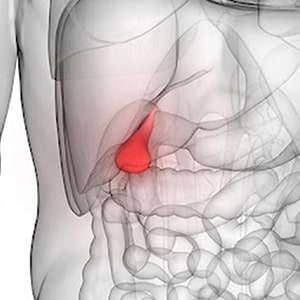Cholecystectomy
(Gallbladder Removal)
What is the function of the gallbladder?
following symptoms:
• I’m experiencing bloating.
• Fever.
• Jaundice
• Nausea
• The right side of the abdomen pain may extend to the back or shoulder.


What does a cholecystectomy entail?
The gallbladder is removed during a cholecystectomy.
On your abdomen, the surgeon makes a few small incisions (belly). The surgeon inserts a laparoscope, a narrow tube with a camera at the end, through one incision. On a screen, your gallbladder is displayed. The gallbladder is subsequently removed via a second minor incision.
An open cholecystectomy is more intrusive than a laparoscopic cholecystectomy. A wider incision is required for this type of gallbladder removal.
Who should have their gallbladder removed?
Laparoscopic cholecystectomy can be used to treat gallstones that are causing pain and infection.
Gallstones, which are crystals that form in the gallbladder, are produced by the gallbladder. They can prevent bile from leaving the gallbladder and entering your digestive system. This blockage causes cholecystitis (inflammation of the gallbladder).
It takes around an hour or two to do a laparoscopic cholecystectomy. In your abdomen, a surgeon will make a few small incisions. In those incisions, thesurgeon will implant tiny, hollow tubes. A laparoscope and other surgical tools will subsequently be inserted into the tubes by the surgical team.
Carbon dioxide may be pumped into your abdomen by your team. The surgical region is inflated at this point, making it easier to view within. The surgeon will use special instruments to separate the gallbladder from the liver bed and connections and remove it. Stitches, surgical clips, or surgical glue will be used to close the incisions.
Gallstones cause pain and infection, which can be alleviated by gallbladder removal. It can also help to prevent gallstones from forming again.
Gallstones can cause pain and infection if they are not treated. The gallbladder may rupture, posing a life-threatening situation. Gall stones may cause jaundice if slipped into common bile duct. It may cause cancer in long standing cases in case of large single stone in few cases.
Gall bladder removal doesn’t hamper the digestion as it is not essential, it just stores a tiny amount of bile in it , which is compensated by increased enterohepatic circulation of bile after cholecystectomy.
